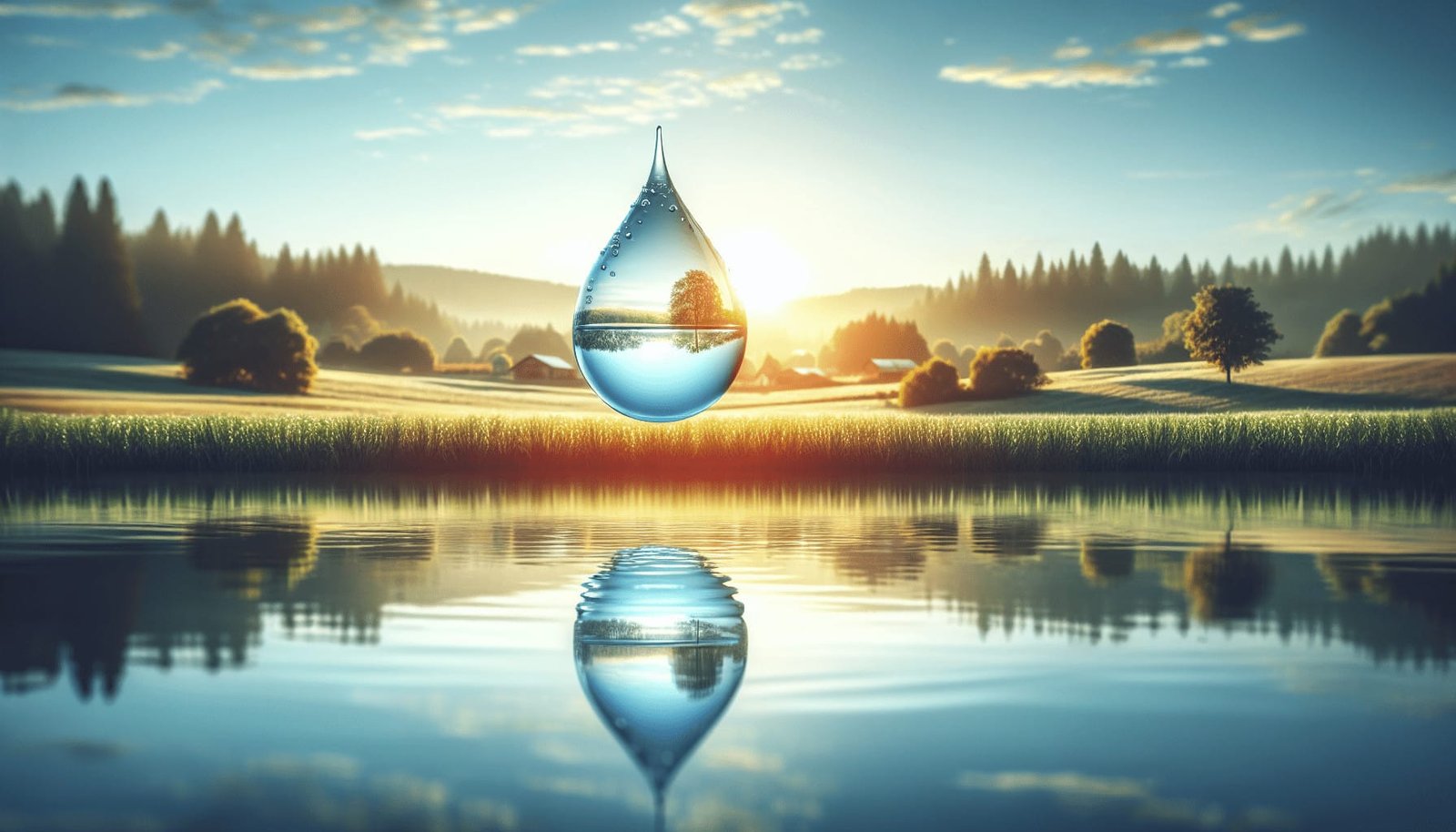Have you ever wondered about the quality of the well water you drink or use daily? As someone who relies on well water, understanding what constitutes its quality is essential for ensuring that your consumption is safe and healthy. This conversation-starter will lead us through an exploration of well water quality and highlight important concerns that you should be aware of.

Understanding Well Water Quality
Well water quality refers to the condition of water extracted from underground aquifers using wells. It’s critical because water quality directly affects your health, the safety of your household, and the performance of your appliances that use water.
Key Elements of Well Water Quality
When assessing well water quality, several vital components should be examined:
Microbiological Content: This includes bacteria, viruses, and other pathogens that may cause waterborne diseases. Testing for microbial presence is essential, especially for detecting coliform bacteria and E.coli, which indicate fecal contamination.
Chemical Contaminants: These can come from both natural and man-made sources. Naturally occurring substances include arsenic, radon, and heavy metals such as lead and mercury. Man-made contaminants often originate from agricultural runoff, industrial waste, or improper waste disposal.
Physical Characteristics: Elements such as color, odor, and taste fall under this category. While these may not always pose a health risk, they often indicate the presence of other contaminants.
Total Dissolved Solids (TDS): High levels of TDS can lead to water that is more mineral-laden, which affects taste and can also cause scaling in pipes and appliances. TDS indicates the overall ions, salts, and metals in your water.
Why Does Well Water Quality Matter?
The quality of your well water matters for several reasons:
Health Impacts: Contaminants in drinking water can cause serious health issues, ranging from gastrointestinal illnesses to neurological problems and chronic diseases.
Household Safety: Poor water quality can damage plumbing systems, water heaters, and appliances, leading to costly repairs.
Environmental Implications: Unmonitored well water can also indicate broader environmental issues, as contaminants often have wider ecosystem impacts.
Factors Affecting Well Water Quality
Several factors impact the quality of well water:
Geographical and Geological Factors
The physical location and the geological formation of the land surrounding your well play significant roles in determining water quality. Areas with high mineral deposits may have naturally high levels of certain elements, such as sulfur or iron.
Weather and Climate
Heavy rains and flooding can lead to contamination, especially if your well is not adequately sealed. Similarly, drought conditions may concentrate pollutants as water levels decrease.
Human Activities
Human activities are a significant source of contamination. This includes:
Agricultural Runoff: Pesticides, fertilizers, and animal waste can infiltrate groundwater, introducing nitrates, phosphates, and pathogens.
Industrial Discharges: Factories and manufacturing plants can leak chemicals into groundwater supplies.
Improper Waste Disposal: Failing septic systems or illegal dumping can introduce harmful bacteria and chemicals into your water supply.

What Is Agricultural Runoff and Why Is It Dangerous?
Agricultural runoff is water that leaves farm fields because of rain, melting snow, or irrigation, carrying with it substances used or found on the farm. It is dangerous because it can drastically affect well water quality by introducing pollutants.
Components of Agricultural Runoff
Here are some common constituents:
Pesticides and Herbicides: These chemicals can leach into groundwater, posing risks to both human health and aquatic ecosystems.
Nutrients: Nitrates and phosphates from fertilizers can lead to algae blooms in water bodies, resulting in oxygen-deprived environments known as dead zones.
Pathogens: Animal wastes may introduce harmful bacteria and viruses into water supplies.
Impacts of Agricultural Runoff
The effects can be extensive:
Health Risks: High nitrate levels in drinking water are linked to conditions such as methemoglobinemia, also known as “blue baby syndrome,” which affects infants.
Environmental Consequences: Runoff can lead to eutrophication in water bodies, degrading water quality and harming aquatic life.
Economic Impact: Contaminated water requires treatment, which can be expensive for both individuals and communities.
Mitigating the Risks
Fortunately, there are ways to reduce the impact of agricultural runoff:
Best Management Practices (BMPs): These include measures such as buffer zones of vegetation around fields to absorb runoff, proper timing of fertilizer application, and reduced use of harmful chemicals.
Wetland Restoration: Restoring wetlands can help filter runoff naturally before it reaches larger bodies of water.
Improved Water Testing: Regular well water testing and monitoring can help you act quickly if contamination is detected.

Assessing and Ensuring Your Well Water Quality
Maintaining your well water quality involves regular monitoring and taking proactive steps to handle any issues that arise.
Regular Testing
The cornerstone to ensuring safe well water is regular testing to detect any deviations from accepted safety standards. Testing should typically be conducted annually, but more frequent checks may be necessary if there are changes in taste, odor, or appearance, or following significant weather events.
Common Tests for Well Water
Microbial Testing: Checks for bacteria, viruses, and other pathogens.
Chemical Testing: Tests for substances such as nitrates, heavy metals, and pH levels.
Physical Testing: Assesses the clarity, color, and smell of the water.
Treatment Options
If tests reveal contamination, there are several treatment solutions:
Filtration Systems: These can remove a wide variety of contaminants, including sediment, chlorine, and some pathogens.
Chemical Treatment: This involves using chemicals like chlorine or UV light to disinfect water.
Reverse Osmosis: A highly effective method to remove contaminants, though it can be costly and may waste water.
Maintenance Strategies
Routine inspection and upkeep of your well and its components are vital in maintaining water quality:
Well Cap and Casing Inspection: Ensure they are in good repair to prevent surface contamination.
Proper Waste Disposal: Prevent contamination by maintaining septic systems and being mindful of chemical use around your well.
Farm and Neighbor Relations: Work with community members to adopt pollution-prevention measures collectively.

Legislation and Community Involvement
Understanding well water quality also means being aware of local regulations and community efforts aimed at protecting water sources.
Government Regulations
Authorities often provide guidelines and oversight to ensure safe drinking water. Familiarize yourself with regional health regulations and legislation, such as the Safe Drinking Water Act in the United States, which sets standards for water quality.
Community Engagement
Involvement in community water boards and local conservation efforts can help you stay informed about nearby endeavors to maintain and improve water quality. Sharing resources and strategies with your neighbors can also foster a communal approach to protecting your water supply.

Conclusion
By understanding and actively participating in the control of your well water quality, you empower yourself to maintain a healthy and safe household. Water is a precious resource, integral to life, and its purity should never be taken for granted. With awareness and appropriate action, you can ensure that your water is safe and sustainable, contributing to your wellbeing and that of the environment. Keep informed, engage with community efforts, and make well-considered decisions about how you manage and utilize this essential resource.
